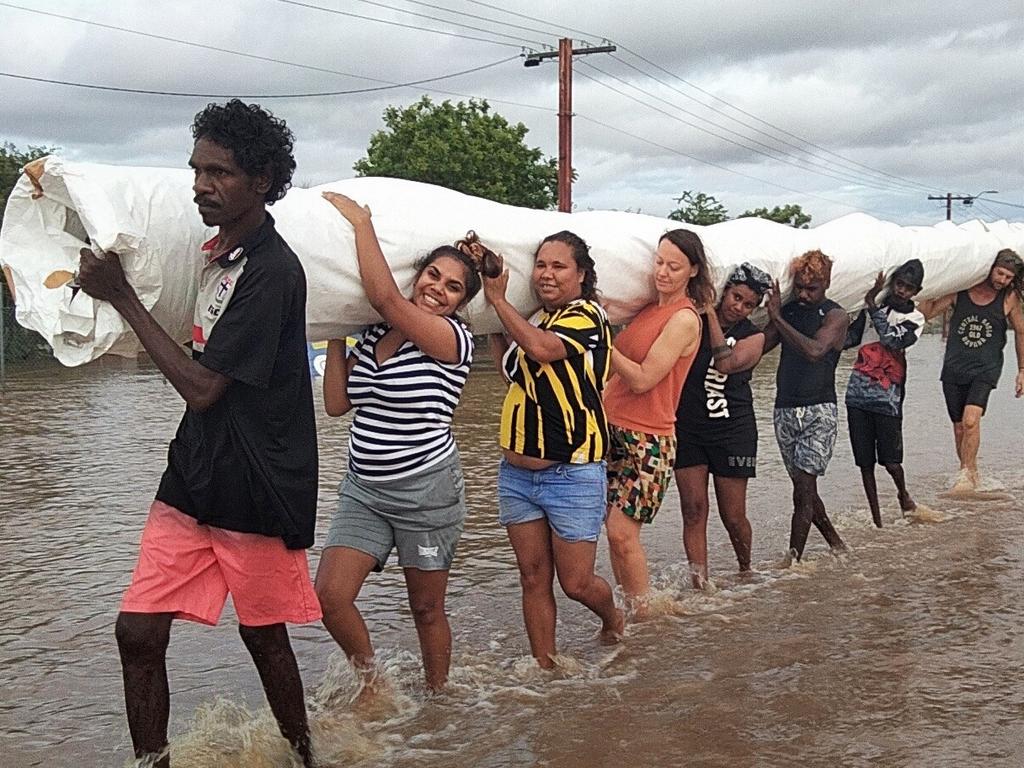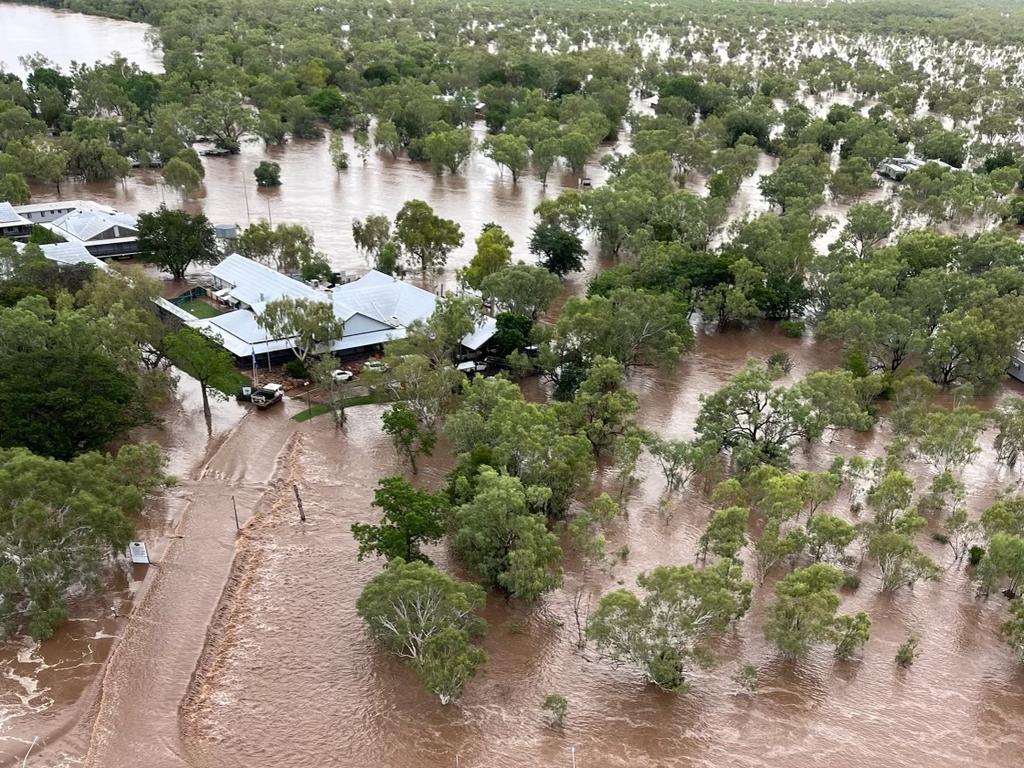Extreme weather to become more frequent amid record rainfall and flooding
Catastrophic floods have cost Australians more than $6bn in damage in the past year, as record amounts of water continue to gush along the Fitzroy River in WA.

Catastrophic floods have cost Australians more than $6bn in damage in the past year, as record amounts of water continue to gush along the Fitzroy River amid one of Western Australia’s worst environmental disasters.
Emergency evacuations were carried out in Noonkanbah – 100km west of Fitzroy Crossing – in the Kimberley on Friday, with the Bureau of Meteorology previously estimating 60,000 cu m of water was rushing down the Fitzroy River brought on by a deluge from ex-tropical cyclone Ellie.
It is the latest in a series of devastating floods to strike the country, the worst of which occurred in Queensland in late February costing the lives of more than 20 people and leaving more than 20,000 homes inundated.
The Australian Defence Force was called in to help evacuate people in isolated communities in the region by flying them to safety.
The BoM reported the Fitzroy River peaked at Fitzroy Crossing on Wednesday and at Noonkanbah on Friday. They expect the peak to reach the tiny rural town of Willare on Saturday morning.
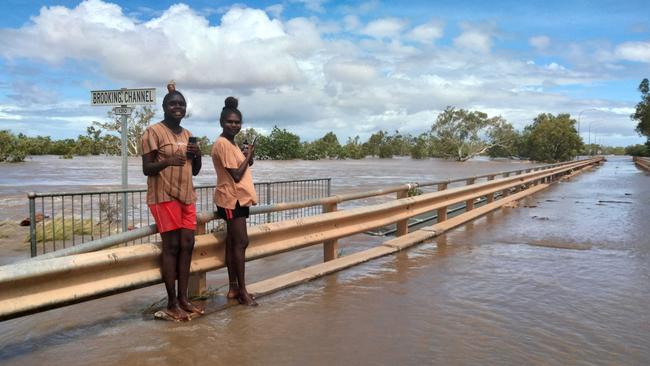
Wangki radio consultant and photographer Andrea Myers said Charlotte and Myra Mulligan were inspecting the damage at Brooking Channel in Fitzroy Crossing, close to the top of WA about 400km east of Broome, on January 5. “The water is slowly receding. Now it's just assessing the damage and trying to get out to places as (it) goes down,” she said.
The bridge where the girls are standing has collapsed, Ms Myers said, and she is now helping to ensure the food store at Bayulu – about 15km south of Fitzroy Crossing – can be restocked with freight arriving via a plane from Broome and that emergency notices are being broadcast.
In earlier flooding catastrophes, the death toll from severe flooding in South East Queensland and northeast NSW in February last year reached at least 13.
Torrential rain then struck Victoria, Tasmania and NSW in October, leading to the current flood disaster in South Australia.
A La Nina weather event, a negative Idian Ocean Dipole and climate change combined to dump thousands of millimetres of rain on sodden ground over huge parts of eastern Australia, leading to successive floods since February.
Bureau of Meteorology data shows most of NSW copped “very much above average” rainfall in the 12 months to December, with parts in the south, centre and north of the state reporting the “highest (rainfall) on record”.
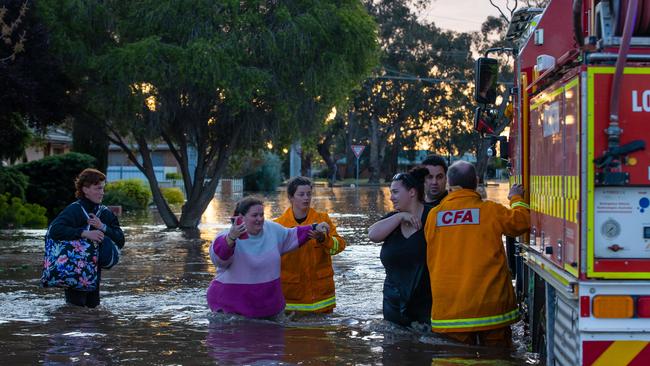
Victoria also reported the highest rainfall on average, while large swathes of Queensland, the Northern Territory and WA all recorded above-average rainfalls.
La Nina – part of a climatic cycle caused by cooler-than-normal waters in the tropical Pacific Ocean being brought to the surface of the ocean – brings increased rainfall and more tropical cyclones. There have been three consecutive La Nina events since 2020. The cycle has lasted three years only three times in history, BoM head of long range forecasts Andrew Watkins said
“With each year of La Nina, our soils got wetter, our rivers got more full and our dams got full, and gradually Australia was becoming soaked,” he said.
“It couldn‘t handle much more rainfall at all. And we have got to the stage where any more rain just runs off as a flood.”
The negative Indian Ocean Dipole and separately more weather systems further south – called the Southern Annular Mode – has directed more rain on to NSW. For every degree the Earth warms as a result of climate change the atmosphere will hold 7 per cent more moisture, Dr Watkins said.
Australian National University climate scientist Mark Howden, also a member of the Intergovernmental Panel on Climate Change, said weather patterns such as La Nina and its opposite system El Nino – which brings hot and dry conditions – will become more extreme and severe weather could become more frequent.
“We need to be managing our climate, not just managing a drought or a flood,” he said.
“We need to be doing that on a consistent basis. Also different climate hazards interact with each other … it’s not just fire, it’s not just flood, it’s not just lack of water.
“These things come as a package, and we need to be thinking about complex risk.”
One way to tackle flooding in the future, Professor Howden said, was to avoid building housing and industry on flood plains so they can absorb water as it spreads out and soaks into the soil.
“I think we need to be starting to think about how to best use these landscapes to manage these extremes,” he said.
During 2022, more than 277,000 disaster-related insurance claims were lodged from four declared flood events worth $6.37bn, the Insurance Council of Australia said. Across Australia, 58 local government areas were affected by extreme weather events – 48 per cent of those experienced two extreme weather events and 36 per cent three or more.
Queensland incurred more economic damage from extreme weather than any other state or territory in 2022, at $2.82bn – about six times that of Victoria.
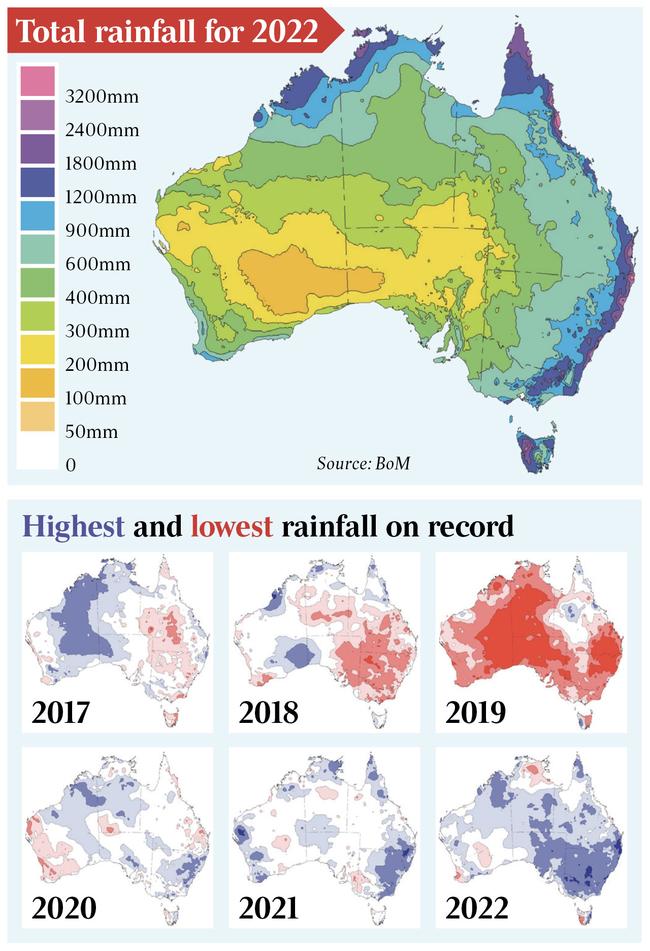
An ICA spokeswoman said that as the risk of extreme weather worsens, the price of insurance is becoming more costly for those who live in high-risk areas.
“The Insurance Council has been calling for greater investment by governments in measures that increase the protection of homes and communities from the impacts of extreme weather events like flooding,” she said.
“These can include community infrastructure such as levees and floodways, and household retrofits like home raising or moving all services to above the expected flood line.
“In some extreme cases the only effective mitigation against flood damage is for the property to be bought back and the land repurposed, and for the residents to be helped to relocate to higher and safer ground.”
Insurers have paid out $3.8bn to date to customers affected by these events – $1.6bn more than in 2021.
Dr Watkins said the past two years of extreme flooding were not likely to be “the new normal”, but extreme weather would be more frequent in the future.
“Whether that be extremes of heat, whether there be extremes of fire weather, whether that be extremes of rainfall,” he said.
“We still have the natural variability in there, but unfortunately we have loaded the dice to increase the odds of things being more extreme each time.”


